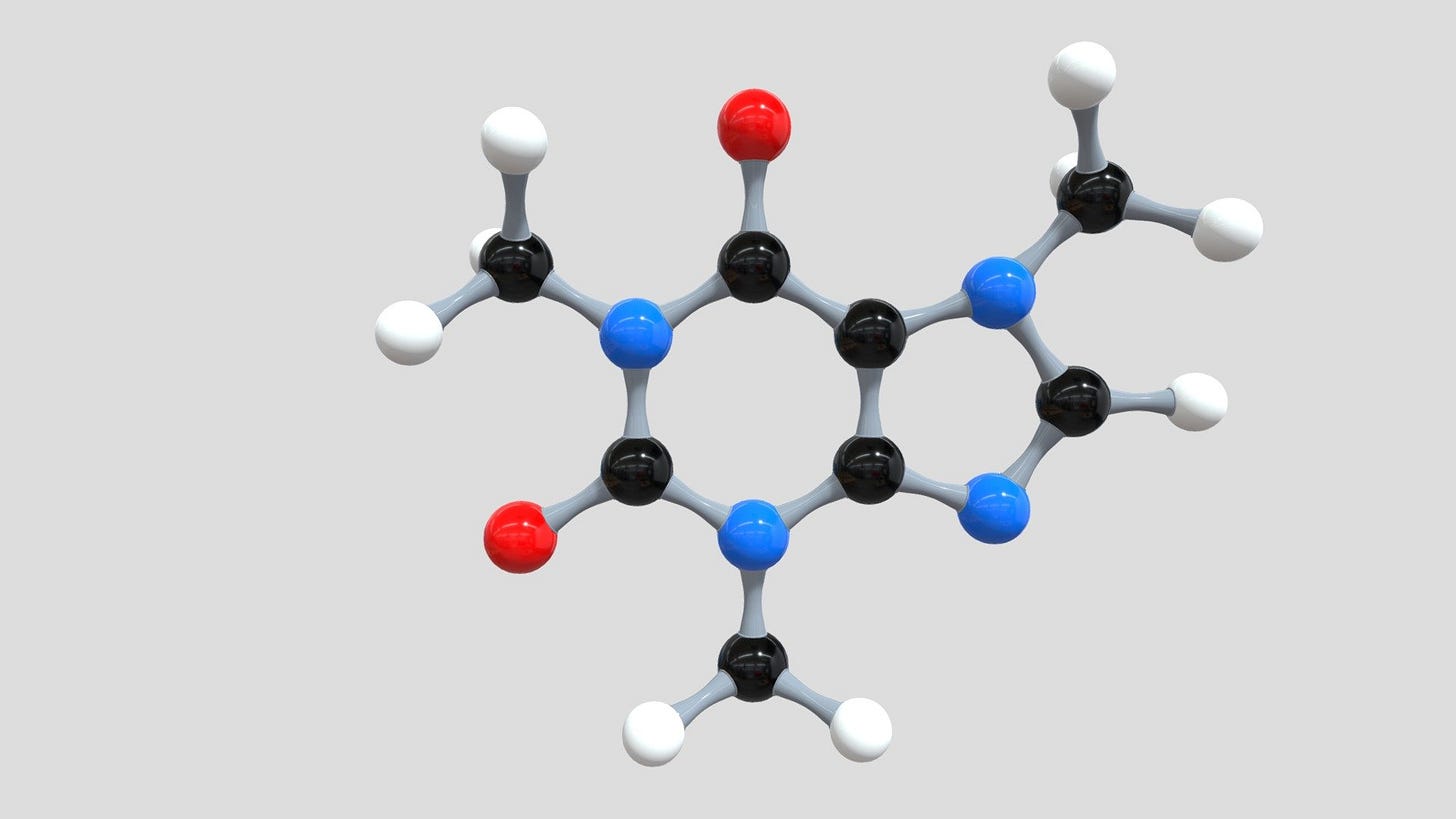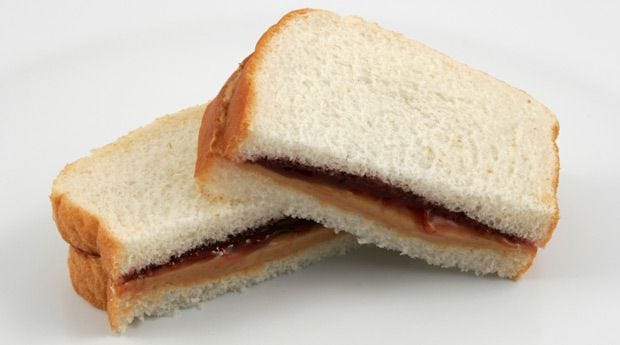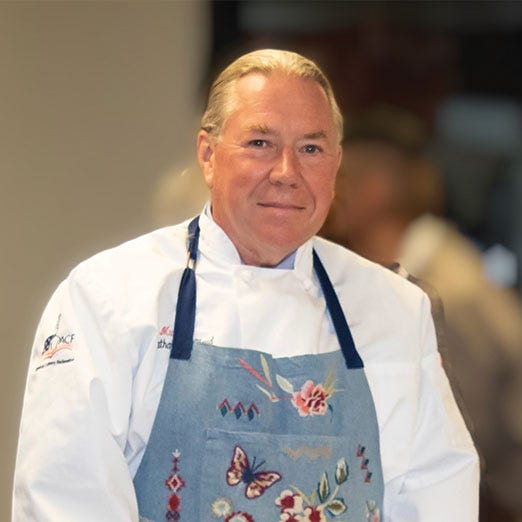Greetings, and welcome to the Intentional Table! I think we should pull back the curtain on how the food in this joint tastes so good!
Now, why in the world does that taste SO good? What the heck is in there, anyway? What did they put in there? There is no way I could pull that off. Well, these are the questions and statements that people always make in well-executed restaurants. When I worked at Commander’s Palace, we simply called it ‘restaurant magic.’ To a certain extent, it was, because as Arthur C. Clarke (one of my favorites) said, “Any sufficiently advanced technology is indistinguishable from magic." Thus, if you do not know, nor understand how something happens ‘back there,’ well… it’s magic.
Most chefs won't tell you how complex flavor pairing really is. Here's something that might surprise you - 80% of what we taste actually comes from our sense of smell. This explains why some food combinations create magic together, while others just don't work.
The science behind complementary flavors is the sort of thing I love. Our noses can pick up to 10,000 different odorant molecules, which affects how we experience food pairings by a lot. Research shows that ingredients often work well together when they share key aroma components. Tools like Foodpairing® have used this principle to analyze over 1,700 ingredients based on their aromatic profiles.
This piece reveals the hidden science behind flavor combinations that chefs rarely talk about. You'll learn how our cultural backgrounds shape our taste priorities, like why peanut butter and jelly bring back such nostalgic memories. Advanced AI tools like FlavorGraph now predict successful pairings by analyzing chemical structures. I am sure, however, that using the nose of a wise Chef would do the same. (Ha!) The scientific explanation behind perfect matches like tomato and basil or the intriguing contrast of chocolate and chili might just change how you think about food.
The science behind what we taste
The science behind flavor pairing becomes clear once you learn what happens in your mouth when you taste food. This knowledge helps explain why certain ingredients naturally work well together.
Taste vs flavor: what's the difference?
People often use these terms interchangeably, but taste and flavor create different sensory experiences. Taste refers to the five simple sensations our taste buds detect: sweet, sour, salty, bitter, and umami (savory). These taste receptors exist not just on our tongues but also on our mouth's sides, soft palate, cheeks, back of throat, and even our esophagus.
Flavor creates a much richer sensory experience. It includes all sensations we experience while eating, combining taste with smell, texture, temperature, and even pain sensations (like the burn from chili peppers). Scientists describe flavor as "a complex combination of the olfactory, gustatory, and trigeminal sensations perceived during tasting." That is very fancy, and although true, I just want to mention that sometimes the smell of something, the taste of it, and the flavor of it are three totally different things. I have tasted things that were amazing, and smelled SO bad. (Durian) I have tasted things that had no smell at all, and then ouch (some chilis).
How aroma shapes 80% of flavor perception
The sort of thing I love about flavor perception is that smell accounts for about 80% of what we taste, as I mentioned. Our perception would stay limited to those five simple tastes without our sense of smell. This explains why food tastes bland when you catch a cold—congestion blocks your nasal pathways that carry aroma molecules.
Your sensory system can identify an amazing number of flavors—scientists estimate we can detect a trillion different aromas. Try this simple experiment next time you eat chocolate: hold your nose while eating. You'll notice only its sweetness or bitterness, not its rich chocolate flavor.
The role of retronasal and orthonasal smell (geek alert)
Our olfactory system uses two distinct pathways that add different dimensions to flavor perception:
1. Orthonasal olfaction: Odors from the external environment enter through our nostrils when we sniff food before eating. This pathway helps us identify and anticipate food rewards.
2. Retronasal olfaction: Volatile aroma compounds travel from our mouth's back through the nasopharyngeal passage into our nasal cavity during chewing and swallowing. This pathway plays a vital role in flavor perception and significantly influences what we experience as "taste".
Both pathways activate identical receptors in our olfactory epithelium (skin cells) yet create different perceptual experiences. The retronasal pathway becomes especially important to successful flavor pairings since it directly connects to how we experience combined flavors in our mouth.
How flavor combinations actually work
For generations, top chefs have understood the chemistry behind great flavor combinations through their instincts. The success of food pairings depends on complex interactions between aroma compounds rather than just individual taste sensations.
Shared aroma compounds and food pairings
Scientists developed the "food pairing hypothesis," which suggests that ingredients with shared flavor compounds taste better together. This principle helps explain why certain combinations work so well. White chocolate and caviar share trimethylamine and other flavor compounds. Chocolate and blue cheese have at least 73 flavor compounds in common. Tomatoes and basil create a perfect match because their shared flavor compounds naturally balance each other. This is making me hungry.
Chemical analysis reveals that foods can have overlapping aroma profiles even when they seem unrelated. Research looking at 56,498 recipes discovered that North American and Western European cuisines use compound-sharing pairs more frequently than random chance would suggest. East Asian cuisines tend to avoid ingredients that share flavor compounds in their recipes, such as sweet and sour.
Complementary vs contrasting flavors
Food combinations usually follow two main approaches:
· Complementary flavors create harmony through similarity. Chardonnay matches perfectly with lobster in cream sauce because both have rich, creamy profiles. Buttery cream sauce goes well with wines that share similar creamy characteristics.
· Contrasting flavors achieve balance through opposition. The same lobster dish pairs beautifully with Champagne because its crisp acidity and bubbles provide the perfect contrast. Acidic or high-alcohol wines cut through fatty foods effectively.
Why some pairings feel intuitive
Cultural traditions make many successful pairings feel natural. Studies show North American dishes use more compound-sharing pairs than East Asian cuisines, which lean toward contrasting flavor profiles. Our emotional connections and memories shape our reactions to certain combinations. Regional preferences influence cultural staples like rice and beans or soy sauce and ginger that shape what we expect.
Examples of classic and unexpected pairings
Food combinations, both classic and unexpected, show amazing principles of flavor pairing at work. Chemical compatibilities and cultural histories explain why these pairings have stood the test of time.
Tomato and basil
Tomato and basil are the foundations of one of cooking's most iconic combinations. This pairing showcases the "what grows together, goes together" principle. Raffaele Esposito brought this combination into the spotlight in 1889 with the Margherita pizza. He honored Queen Margherita by using ingredients that matched Italy's flag: red tomatoes, white mozzarella, and green basil.
Chocolate and chili
The Aztecs discovered that chocolate and chili work beautifully together, understanding that these tropical fruits shared complementary flavors. Each ingredient brings varied fruit notes that complement each other. Food researchers have found that different chili varieties add unique characteristics to chocolate. Aji panca contributes berry-like notes, Aleppo adds acidic brightness, Guajillo brings brash boldness, and Chipotle offers sweet smokiness. This pairing goes beyond just adding heat—it highlights subtle notes in both ingredients that might go unnoticed otherwise.
Peanut butter and jelly
This simple combination shows how complementary flavors lead to success. A food expert puts it simply: "You have something fruity (jelly), something rich and fatty (peanut butter), and something to spread it on (bread)." This perfect mix of fat, fruit, and carrier became available to more people after 1928 with sliced bread's invention and Paul Welch's 1917 patent for grape jelly ("Grapelade"). A 2021 University of Michigan study revealed that eating a PB&J can add up to 33 minutes to your life span, thanks to its protein-rich nut content. Mom must have known this.
Miso and caramel
Miso caramel stands out among surprising pairings for balancing salty umami with sweet richness. Chefs use this combination in both sweet and savory dishes—from desserts to stir-fries. Australian restaurateur Bill Granger explains it best: "Caramel can be cloying, but you can throw in miso. It is a mini flavor-enhancer... its umami richness cuts through the sweetness of the caramel and gives this old favorite an extraordinary new twist." This combination shows how savory elements can turn overly sweet flavors into complex, balanced tastes.
Dark chocolate and seaweed
Dark chocolate and seaweed might seem like an odd match, but this combination leads a new trend in sophisticated flavor pairings. Artisanal chocolate makers now love this combination. They point to the perfect balance between chocolate's bittersweet properties and seaweed's briny umami notes. One producer describes their chocolate as having "a welcome aroma of the beach—salty and fresh—and flavors of dense chocolate cake... Sweet, salty, umami delicious!" This pairing proves how contrasting flavors create a satisfying balance.
How chefs and scientists use this knowledge
Modern food pairing extends beyond tradition and intuition. Chefs and scientists now rely on powerful analytical tools to gain insights. The cooperation between culinary arts and laboratory science changes our understanding of flavor combinations.
AI tools like FlavorGraph and Foodpairing®
Platforms that analyze chemical structures and predict successful combinations showcase AI's transformation of flavor pairing. Sony AI and Korea University's FlavorGraph stands out as an advanced tool that combines chemical analysis and recipe data.
The system learned from one million recipes and chemical structure data from over 1,500 flavor molecules. It contains 6,653 food ingredient nodes and 1,561 food-related chemical compound nodes connected by 147,179 edges that represent relationships. Researchers explain that "FlavorGraph can be used to recommend pairings of food ingredients that are similar in chemical structure and most likely to be used together in recipes". It's so cool, and yet, it's really boring! I would rather experiment happily in the garden.
All I know is that AI cannot yet make me the aforementioned PB&J, so my job is safe; for now…
Balancing creativity with chemistry in the kitchen
Scientific knowledge and culinary intuition must work together despite technological advances. Researchers studying cooking and scientific discovery's connection note that many solutions to cooking constraints have "resulted in breakthroughs that paved the way for the culinary arts".
Food scientists now work with chefs to analyze ingredient interactions, heat's effects on food texture and flavor, and various factors that influence food safety. Through this cooperation, chefs can confidently experiment with unconventional combinations while understanding the chemical principles behind their success. We all hope for happy accidents in the kitchen. Sometimes, it happens right on cue.
Scientific research proves that foods with matching aroma compounds create great combinations. This explains why tomato and basil go so well together, and chocolate and chili make such an exciting pair.
Our cultural background shapes our taste priorities too. North American dishes tend to use ingredients with common compounds. East Asian cooking takes a different path by mixing contrasting elements. These patterns explain why certain food combinations feel like comfort food in one place but taste substantially different across regions.
Professional chefs and food scientists now take a more precise approach to pairing. They use gas chromatography to spot specific aroma compounds. Live tools like FlavorGraph scan millions of recipes to suggest winning combinations. In spite of that, the best dishes still need both scientific knowledge and creative instinct. There is no substitute for two things: what you like, and what you want. Go with those first.
The next time you cook, think over the chemistry behind your favorite food combinations. Understanding why certain ingredients work together builds confidence to try new pairings. Your perfect flavor match might be sitting in your pantry right now - maybe even between ingredients you never imagined would work together.
Until we meet again,
Jonathan











It's true. Size of all these things is super important. An example would be salt. Take the exact same salt and if it's bigger flakes, it's less salty (at least your perception is.) and then grind that up and wow, 10x saltier. It's about surface area. The more surface, the more flavor. Sometimes you want that, and well, sometimes you definitely do not. lol
Wowzah, tasting on cheeks and other areas than the tongue. I looove K-Dramas, there’s soooo much yummy looking foods … and now I know why they tend to eat full mouthfuls which is different than my usual way of eating. I do notice eating slices of a sushi roll is a tastier experience than biting off a piece. I’m having an AHA at this moment — cooks must also craft foods knowing whether the food is going to be eaten in small-sized bites or full mouthfuls. Soooo fun 🤩